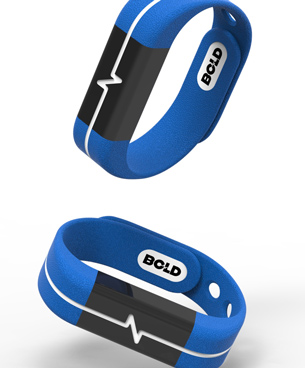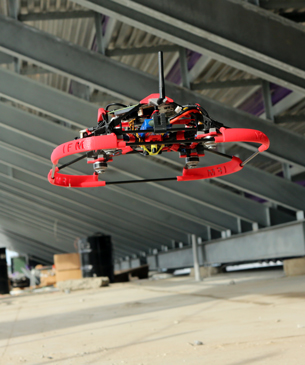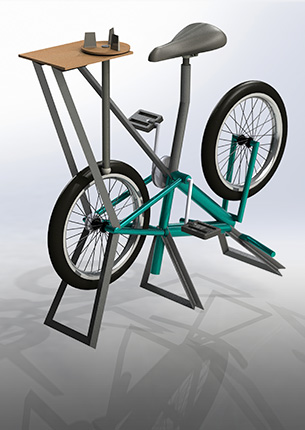inControlA video game controller designed to be used with one hand
Playing video games provides entertainment and enhances rehabilitation for some patients at the Shirley Ryan AbilityLab. Persons diagnosed with hemiplegia (paralysis of one side of the body) have trouble trying to play a video game with a traditional controller designed for two hands. Although mobility varies among individuals, a person with hemiplegia is generally able to perform the movements required to play video games: moving their functioning hand and fingers to press buttons and triggers on a controller. The paralysis on one side of their body makes it difficult for them to press all the buttons and triggers, especially concurrently or in quick succession.
Currently, there are no products on the market designed to make playing video games accessible for a person with the use of one hand only. Although the Wii™ remote controller was designed for one hand, it is not compatible with other systems and is no longer being manufactured by Nintendo.
We were inspired by a patient who beamed at the idea of playing Call of Duty again. It became our goal to make inControl, a one-handed controller that is not only functional but comfortable and easy to use.
Problem
A recreational therapist at the Shirley Ryan AbilityLab observed that her patients, many of whom have paralysis of one side of the body or similar conditions, have trouble playing video games using traditional game controllers because the controllers were designed to be used with two hands. As a partner with Design Thinking and Communications (DTC), she asked a team of three first-year students and one second-year student in Northwestern Engineering to design a controller that could be used effectively with only one hand.
Solution
Over the course of ten weeks, the team developed inControl, a redesigned Xbox One video game controller that could satisfy the requirements of patients with hemiplegia: ease of use, independence, compatibility, and durability. InControl is compatible with the video game consoles available at the Shirley Ryan AbilityLab.
The
The team also mapped the A, B, X, and Y buttons to the user’s fingersat a downward-sloping angle that mimics the natural shape of a resting hand.
The left trigger, right trigger, left bumper, and right bumper
The design for inControl also includes two thumb joysticks: one for a right-handed user and one for a left-handed user. Only one of these joysticks can be active at a time, thanks to a toggle switch on the controller (the team was not able to make this feature functional on their final prototype). The features of inControl are intentionally larger than average and are color-coded or textured to help the user maintain awareness of where their fingers are on the controller.
InControl is intended to be durable: The body of the controller is made of ⅛-inch ACRYLITE; the buttons, triggers, bumpers, and joystick attachments are made from PLA plastic. The team says both materials are strong enough to withstand normal use.

Development Process
The DTC team observed one patient at the Shirley Ryan AbilityLab first play Wii and later on try to navigate an Xbox One™ controller. They also watched students play video games in the Norris Game Room on Northwestern’s Evanston campus. Using their observations as well as oral feedback from the patient, the team created four different mockups of alternative design concepts.
Team members tested two of those mockups with another patient at the Shirley Ryan AbilityLab. Incorporating feedback from this patient into the design process, the team decided to modify the design of one of the mockups to use as a basis for building the final prototype.
The DTC team constructed the final prototype of inControl using Onshape, a 3D modeling software program; laser cutters in the Segal Prototyping and Fabrication Lab, and Ultimaker 3D printers at the Corner
Current Status:
Faculty AdvisersJanice Mejia, Deborah Wood


















































